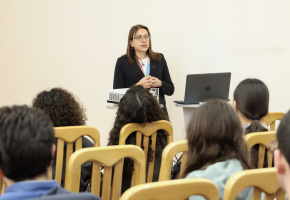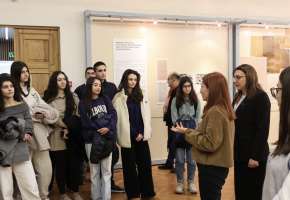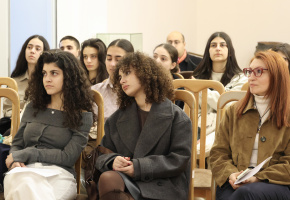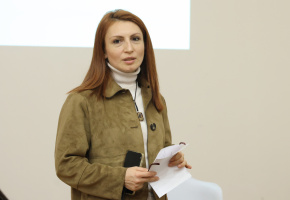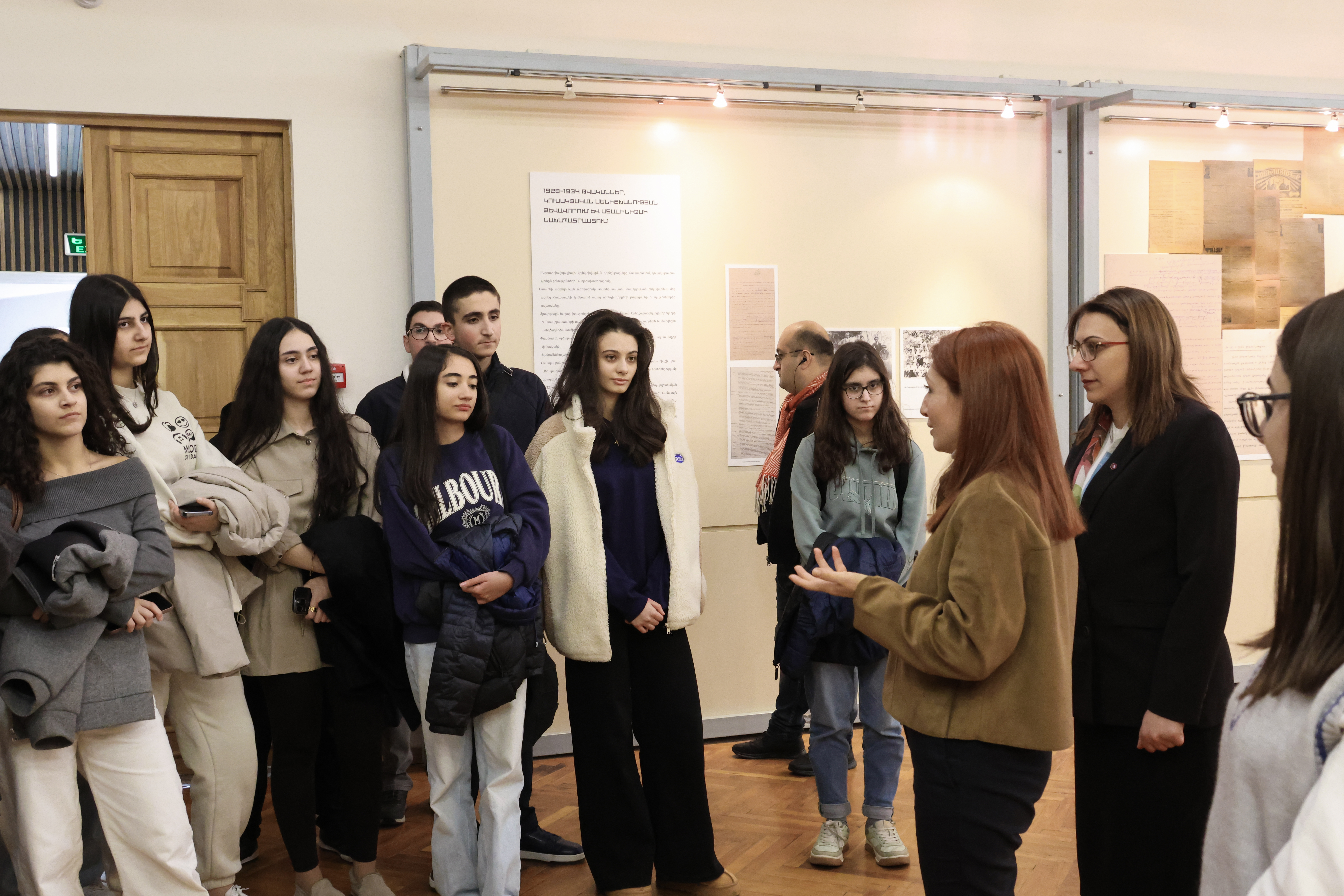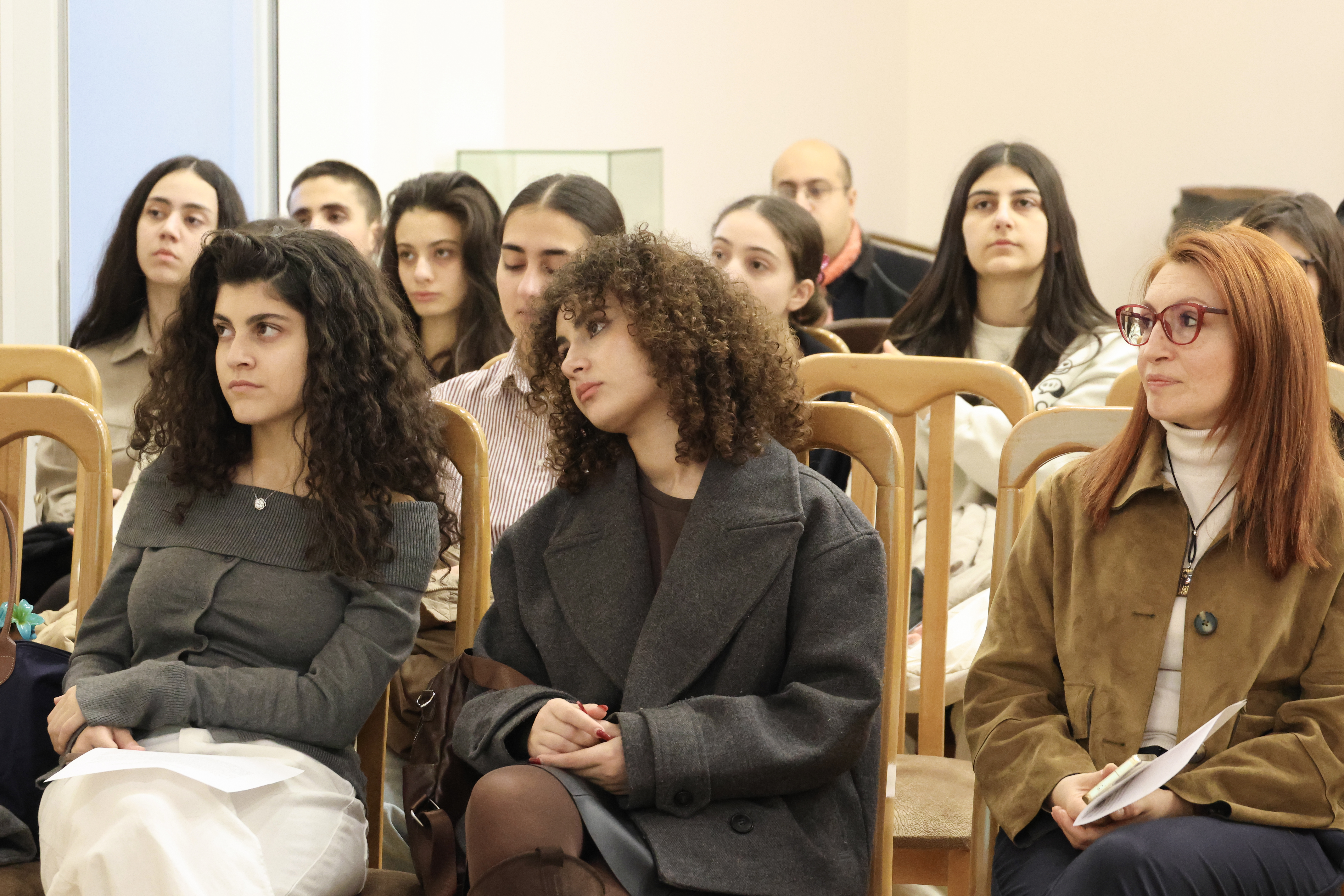November 20, 2025 | 17:30
Science
Education
Events
Lecture on "The Medieval Armenian University" held at YSU
At the YSU History Museum named after Professor Ludwig Gharibjanyan, a lecture titled "The Medieval Armenian University" was delivered. Lusine Tumanyan, PhD in History and senior researcher at the Matenadaran, presented the history of the University of Gladzor, highlighting its rich spiritual, educational, and cultural heritage.

The speaker provided YSU and STEM High School students with a comprehensive presentation on the history of Gladzor University, one of the medieval educational centers, highlighting its significant role from its founding to its decline, spanning from Gladzor to Tatev Monastery.
This institution, which played an irreplaceable role in the development of religious, social, political, philosophical, and creative thought of its time, was referred to by contemporaries with such honorifics as "The Second Glorious Athens", "The Capital of Wisdom", "The Most Renowned University", "The Famous and Holy Monastic University of Gladzor", and "The Seat of the Great University, Esayi and the Rabunepets of Greater Armenia".
Founded in the 13th century in Gladzor (also known as Aghberts Monastery) in the Syunik Province of Vayots Dzor, the educational center was relocated there by Nerses of Mush from the Monastery of Msho Arakelots and became known as Gladzor University. This higher school earned the title "university" due to its structural uniqueness.
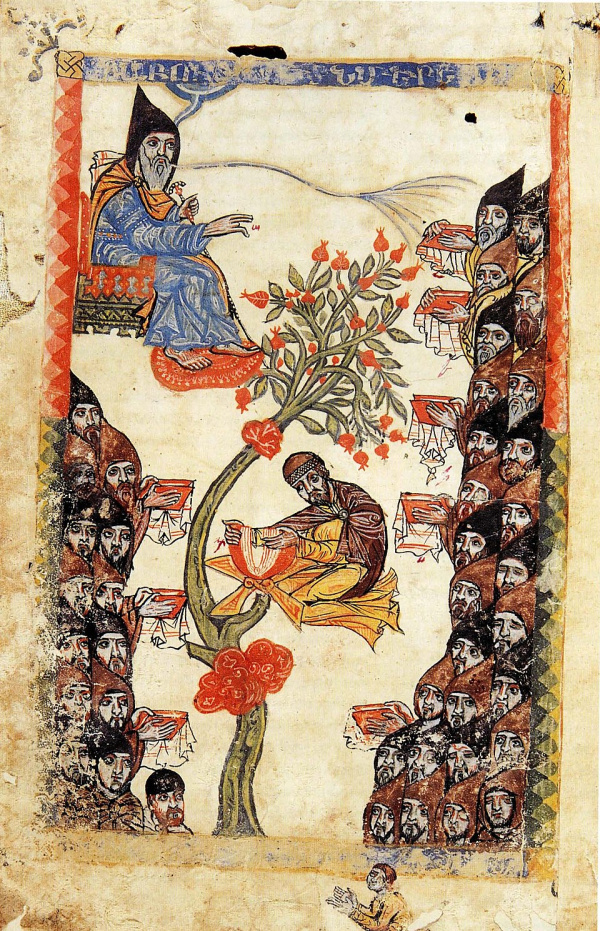
Following the death of Nerses of Mush, at the urging of the governor of Vayots Dzor, Prosh Ishkhan Khaghbakyan, leadership of the school was assumed by Yesayi Nchetsi.
The speaker detailed the university's structure and activities—including ecclesiastical and secular education, calligraphy, codicology, and music—highlighting the goals of the higher school and the unique aspects of its curriculum. Courses included the study of the Bible, the "triple" sciences (grammar, rhetoric, and logic), and the "quadruple" sciences (arithmetic, music, geometry, and astronomy).
Due to the sharply deteriorating political and military situation in Armenia, it became necessary to relocate the academic center. To continue and further develop the established traditions of this spiritual, cultural, and educational hub, a new center was chosen at Tatev Monastery. Before permanently settling at Tatev, Gladzor University moved through Hermon Monastery, Vorotnavank, and then Aprakunis Monastery.
Grigor Tatevatsi is considered the last prominent figure of Gladzor University. His successor, Arakel Syunetsi, attempted to preserve the university, which remained active until 1435. However, the year 1410, the year of Grigor Tatevatsi's death, is generally accepted as the year of the university's decline.
Gladzor University holds a distinguished place in the Armenian manuscript tradition, with numerous manuscripts copied and illuminated there. The Gladzor school of miniature painting reflects both local and Cilician influences. During the lecture, students had the opportunity to view images from manuscripts written and illustrated by Gladzor's notable scribes and illuminators.
The meeting concluded with a question-and-answer session, during which the speaker provided detailed and comprehensive responses.
The lecture on the medieval Armenian university offered the university and school students valuable insights into Gladzor University, an institution distinguished by a sophisticated, multi-disciplinary curriculum spanning both the humanities and applied sciences.
